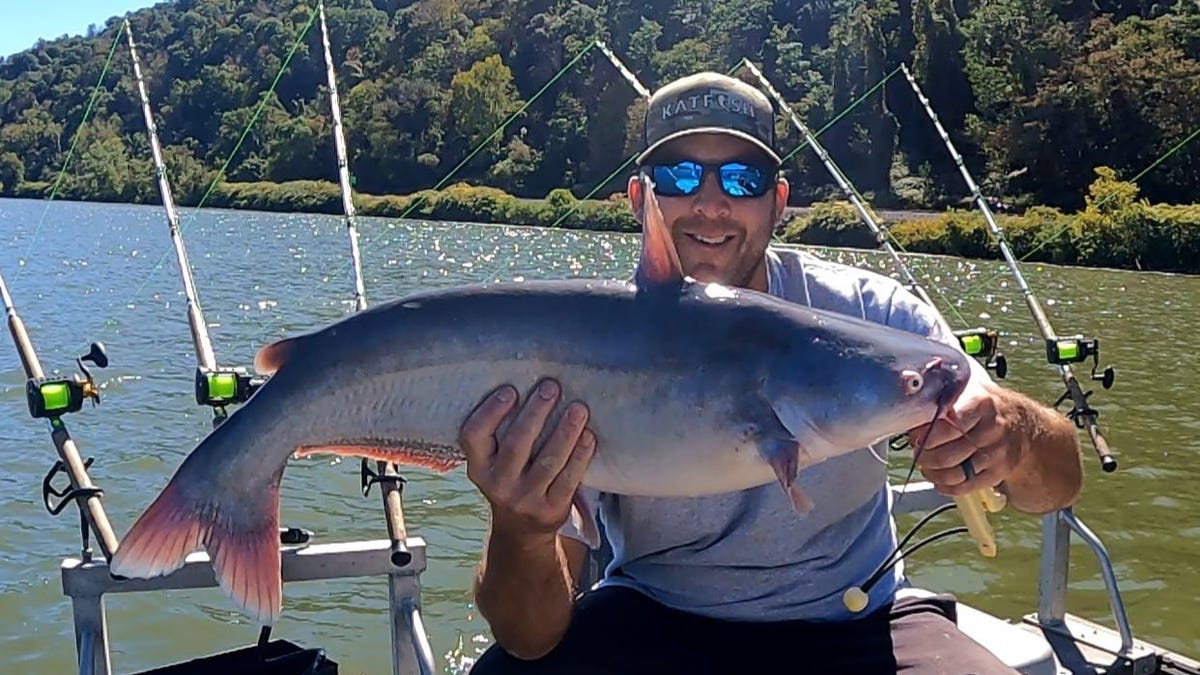Pittsburg, PA
Two sides focused on central issue of gunman’s mental health in Pittsburgh Synagogue shooting trial

PITTSBURGH (KDKA) — The trial of the Pittsburgh synagogue gunman is coming to a close, and in its final hours the two sides are focused on the central issue of Robert Bowers’ mental health and whether he should face the death penalty.
The prosecution says he was driven by pure hate and should face the ultimate punishment. The defense maintains his life should be spared because he was in the throes of mental illness and delusion when he attacked the synagogue in 2018.
The gunman has shown no remorse for his actions. In fact, he told others he wished he had killed more people, believing he is a saint and a martyr who did the work of God by killing Jews whom he believed were possessed by Satan.
“He has no remorse and is unable to express remorse, because the delusions are still there, that he is saving lives, that he is living the life of a saint or a martyr and what he did wasn’t wrong,” said Dr. George Corvin, a defense psychiatrist.
That was the testimony Friday of Corvin, who said the gunman acted out of bizarre and delusional beliefs that Satan-controlled Jews were bringing immigrant invaders into the U.S. and other countries to kill white Christians.
He said the gunman told him the attack on the synagogue was “an unfortunate but unavoidable act” in a war predicted in the end times in the Book of Revelation and he was trying to stave off the destruction of humanity.
“He said, ‘If there was a non-violent way, he would have used non-violence, but the end days must happen. The tribulation must happen. He didn’t want to do this. He had to do this. How can I turn my back on God?’”
Corvin’s testimony is at the heart of the defense case that the gunman is schizophrenic and driven by insane delusions when he planned and executed the attack, and remains delusional to this day.
United States Attorney Eric Olshan quoted other prosecution witnesses who challenged this, saying delusions must be generated from a person’s own brain and that the gunman simply latched on to beliefs, which though disgusting, are held by other white supremacists on the web platform Gab.
“Did you know that everything he believes was on Gab?” Olshan asked.
“There are things that are in scripture, and there are things that are on that awful website. The way he puts them together is schizophrenic,” Corvin said.
Olshan continued to pick holes in the diagnosis of schizophrenia, pressing the government’s case that the gunman is an intelligent person driven by hate who knowingly and methodically planned and executed the attack.
Corvin pointed to the jury and said: “It doesn’t matter what I think. It matters what they think. It may not have to do with schizophrenia, but you don’t want that brain. I don’t want that brain.”
The prosecution rested its case last week and the defense began calling witnesses to the stand. So far, they’ve focused on the family of the convicted gunman. Dr. Katherine Porterfield, an expert who is testifying about mental health issues, was on the stand Monday detailing the convicted gunman’s troubled childhood.
The defense is trying to show why his life should be spared with the jury soon to decide whether he will spend the rest of his life in prison or if he will be sentenced to death.
Last month, Bowers was found guilty of all 63 federal charges in the attack when he shot and killed 11 worshippers from three different congregations, Tree of Life, Dor Hadash and New Light on Oct. 27, 2018. It was the deadliest antisemitic attack in U.S. history.
Recapping the defense’s arguments
In their final push in the penalty phase, the defense is trying to convince the jury that the convicted gunman should be spared the death penalty because of mental illness.
They have called Dr. Katherine Porterfield, a psychologist and trauma expert, to the stand. She testified that the convicted gunman’s actions stem from a family history of mental illness and abuse at the hands of his parents.
The suspect’s father, she said, was violent and committed suicide. And she called the suspect’s mother, Barbara Bolt, a lifelong depressive who physically and mentally abused the suspect as a child. Porterfield interviewed Bolt, who bizarrely admitted to showing the child how to sexually pleasure himself and cutting herself in front of him.
“I was a terrible mom. I did horrible things,” Porterfield quoted Bolt as saying. “I should do half the sentence. He was provoked into things.”
Porterfield said the suspect’s childhood environment, combined with a long family history of depression, resulted in him being suicidal at the age of 10 and repeated suicide attempts throughout his teen years. As an adult, she said he became a loner without true friends.
“He’s had a very impoverished social life, a very damaged sense of self and suicidality stemming from self-hatred,” she said.
But under cross-examination, Porterfield — who never personally interviewed the suspect — conceded she did not include the defendant’s own statements denying the suicide attempts and that he has not been suicidal as an adult.
Prosecutors also brought to light that the suspect had reconciled with his mother, had been a responsible employee at a local bakery and kept a tidy apartment as signs that he had adjusted.
The jury also heard from witnesses who knew the suspect as a child.
Dennis Kavanaugh, the suspect’s fifth-grade teacher, said during a timed math quiz, the suspect “became anxious, shaking and shouting. I was surprised because he was pretty good at math, but I had to stop the class.”
Later, Kavanaugh heard the suspect had tried to harm himself and maybe tried to kill himself, but when he put his hand on his shoulder and tried to counsel him, he said the suspect “made like he was spraying an aerosol can, getting the teacher cooties off his shoulder. I didn’t know how to break through to him.”
The convicted gunman’s family member, Naomi Grimm, a first cousin to his mother, also took the stand.
Recapping victim impact statements
Last week, the prosecution called family members of the victims to the stand to give victim impact statements. The wife and son of victim Dan Stein took the stand; and then, Michele Rosenthal, the sister of victims David and Cecil Rosenthal, talked about her two younger brothers.
Andrea Wedner summed up the loss she feels as a pain in all the small moments when talking about her mother, Rose Mallinger. “I’m haunted by what happened to me and by what I saw and what I heard that day,” she told the jury.
The jury also heard victim impact statements from Dan Leger, who dropped from 145 pounds on the day of the shooting down to 110 pounds in the hospital. He couldn’t even speak, and said he wrote to his wife on a piece of paper “let me go” because he thought he’d never recover from his injuries.
The brother-in-law of Dr. Jerry Rabinowitz took the stand on Tuesday, stating how his brother-in-law just wanted to help people, which is why he got into family medicine, saying that he would even make house calls after hours.
He added that many people in the family have changed their professions since the deadly shooting took place to do things to more directly help people, like Dr. Rabinowitz did.
Michelle Weiss, the daughter of the slain couple Sylvan and Bernice Simon, said she spoke with her mother every day and was asked what life is like without her.
“I lost my best friend, my confidant, lost my most important people in my life in one day,” she said. “It’s very hard for me to go on. We don’t have holidays anymore, nothing is the same.”
Anthony Feinberg, the son of Joyce Feinberg, called his mother “the central cog” in his family who has left such a void.
In earlier testimony, Margaret Durachko, the wife of Richard Gottfried, was the first of more than 20 family members to take the stand during this phase of the trial and testified of how her whole life was turned upside down following the mass shooting at the synagogue.
Diane Rosenthal, the sister of Cecil and David Rosenthal, testified that when they were diagnosed early with fragile X syndrome, her parents insisted they be raised at home with her and her sister Michelle rather than be put in an institution. The boys, she said, were a gift with an infectious joy for life which they spread throughout the neighborhood.
Testifying on videotape, Cecil and David Rosenthal’s mother said she thanks God for her sons and couldn’t be more proud to be their mother but now they are gone.
Support is available for those in need during the trial
If you or someone you know is experiencing mental health effects from the trial, go to 1027healingpartnership.org to find help resources. As always, call 911 to report threats.
Phone: 412-697-3534
Email: info@1027HealingPartnership.org
Website: 1027healingpartnership.org
More resources can be found here.

Pittsburg, PA
About 100,000 blue catfish stocked in Ohio River for future anglers to catch

Historic reintroduction of blue catfish in Pennsylvania
The Pennsylvania Fish and Boat Commission is reintroducing blue catfish to the Ohio River.
Brian Whipkey, Erie Times-News
Anglers in the Pittsburgh area may be catching 50-to 60-pound blue catfish several years from now as part of an ongoing reintroduction effort of this native species of fish.
The Pennsylvania Fish and Boat Commission is in its second year of stocking blue catfish in the Ohio River in the Point State Park area of Pittsburgh and Sewickley.
Blue cats swam in the Steel City until the early 1900s when the water became polluted.
“If it wasn’t for man, pollution and building of the dams on the three rivers, they’d still be here today,” said Gary Smith, the Fish and Boat Commission Area 8 fisheries manager. “Hopefully, we are correcting a wrong that happened with pollution to restore them here in the three rivers.”
In the fall of 2022, the agency stocked 80,000 fingerlings in the river.
“We had requested 40,000 blue cat fingerlings to be stocked in the fall of 2022,” Smith said. “Our hatchery had surplus fingerlings, so we ended up stocking 80,000 fingerlings into the Ohio River.”
Fingerlings are 2 to 4 inches long. The survival rate for them is low because they can become food for the other predators in the river.
In 2023 and beyond, the agency started stocking yearling blue catfish which are about 8 to 10 inches. Each year through 2026, they are requesting 10,000 yearlings to be stocked. “Their survival will be better,” Smith said about the larger fish.
Last year, there were extra fish available and a total of 14,000 yearlings were stocked. About 10,000 of them came from West Virginia and averaged about 9 inches long. The remaining yearlings came from the agency’s hatchery in Tionesta and those fish were about 5 and 6 inches long.
Smith has been looking at the success rates of blue catfish in Kentucky’s portion of the Ohio River and said it takes 17 years for one of them to reach about 35 inches long, possibly weighing 30 pounds. And they will keep growing from there.
In West Virginia’s portion of the Ohio River he said the state record was broken in December and measured 50.5 inches and weighed 69.45 pounds.
“That’s impressive,” he said. In Pennsylvania, he said years down the road 50-60 pound blue catfish may be swimming in the Pittsburgh area, too.
The challenge is the number of years it takes catfish to get that size. Pennsylvania has a shorter growing season compared to the other states to the south.
“We expect slow growth. We see that in our flathead catfish in the Three Rivers. For a flathead catfish it takes 15 years to get to 14 inches,” Smith said.
First stocking: Tiny blue catfish, able to grow near 100 pounds, were reintroduced to the Ohio River in PA
Smith knows of Pennsylvania anglers who travel to other states to target blue catfish.
“There’s definitely a following for blue cats,” he said.
Joe Granata of Monaca, Beaver County, enjoys fishing for a variety of catfish in western Pennsylvania and is looking forward to the blue cats getting big in Pittsburgh’s waterways.
He helped stock the original blue catfish fingerlings in 2022 around Point State Park. He isn’t aware of anyone catching any of them yet.
“It takes several years,” he said for the fish to grow to a catchable size. Anglers may have caught some of the small fish and didn’t realize they were blue catfish.
Granata has caught blues in West Virginia and Virginia where the fish have been living for years. He knows of people catching some upwards of 50 pounds. Granata said the blue cats hit the bait harder than flatheads.
“To fishermen, that’s exciting,” he said. In the river, he uses cut bait and live baits for a variety of catfish species.
He mostly targets flathead catfish in western Pennsylvania where they also get to be about 50 pounds. In the eastern part of the state, he said the flatheads grow faster and get larger.
The new state record for flatheads was caught in the Susquehanna River on May 14, 2023. Mike Wherley, 46, of Fayetteville broke the existing record with his 66-pound, 6-ounce catfish from the river in Lancaster County.
Monitoring the blue cats
The blue catfish that have been stocked in Pittsburgh appear to be surviving. Smith said a blue catfish was captured during their night electrofishing surveys in October on the Pittsburgh Pool of the three rivers. The fish was found on the Monongahela River, just two-tenths of a mile upstream of Point State Park in Pittsburgh.
“Other than that, we have not gone out to target them. The plan is in 2025 to go out on the Ohio River targeting blue cats, doing daytime, low frequency electrofishing. That’s the primary gear biologists use to collect blue cats,” he said.
They will also place hoop nets and trout lines out to catch and inspect blue cats.
“Hopefully, we will pick up a couple then,” Smith said about monitoring the early success after three years of stockings. “I’m not expecting to see a lot of blue cats,” he said. In 2028, another monitoring effort will be conducted. “Hopefully, we will see more blue cats then.”
Every three years they will continue to do monitoring studies of the population.
“Based on what we are seeing, we hope to move to the lower Allegheny River and the Mongahela River for yearling stockings for five years,” he said.
Female blue catfish will start reproducing after they get to be 6 or 7 years old or in some cases they need to be a few years older. Smith is hopeful they will start spawning in the Pittsburgh area. “That’s the plan, that’s the hope, to establish a naturally reproducing population,” he said.
Only in western Pennsylvania
The goal is to keep the blue catfish in the Ohio River area where they are native fish. In other streams, these large fish could be detrimental to the ecosystem.
“The only place they are native in Pennsylvania is the Three Rivers, the Ohio River, the lower Allegheny and the Mon (Monongahela) River,” he said.
Anglers shouldn’t be moving blue catfish to other waterways.
“We don’t even want to see them in our lakes here in western Pennsylvania. They are a big river fish. Only native here in Pennsylvania to the Three Rivers,” Smith said.
In the eastern part of the state, he said unfortunately blue cats have been showing up in the Delaware estuary and Chesapeake Bay.
“They are a large predator, top of the food chain, they need to have lots of area and lots of forage and one of their main forage is gizzard shad but they are omnivores. They will eat other things as well, other fish, freshwater mussels and macro invertebrates. They are adapted to the big rivers,” he said. “Because they are only native to the Three Rivers, we don’t want them elsewhere in the state because it’s possible they could have a significant impact on native fish populations in the Susquehanna and Delaware basins. They can significantly change the ecosystems in places where they don’t belong. We see that with insects, mammals and fish.”
Granata is looking forward to seeing heavy blue cats in Pittsburgh.
“I think it will be awesome. I think it will be good for the environment, too, just to have another apex predator back in the waterways to keep everything else in check,” Granata said about the return of blue catfish. “They’re native here.
“Selfishly as a fisherman, it’s going to be awesome, but I think for the environment, too, the ecosystem of the rivers I think it will be good as well.”
He is concerned that too many catfish will be caught out of the waterways once the population is established. Right now anglers are permitted to keep 50 catfish a day, similar to the regulations for perch and crappies. “It takes them forever to get big,” he said.
Smith said the agency is considering a catch-and-release only regulation on blue catfish in the three rivers area. “To get them established. It’s something we are looking at,” he said.
The blue catfish are expected to expand the opportunities for anglers throughout the year.
“The biggest difference for me would be, it’s an all-year fish. Blue catfish are still pretty active in the winter months as opposed to flathead catfish. Once the water temperature in our rivers gets to the mid 40s, the flathead catfish really slow down,” he said.
Granata said the winter months he travels to other states for blue cats as they are active feeders regardless of the temperature. “It can be 10 degrees below zero and they’re out there feeding,” he said. When the blue cats become prevalent in Pittsburgh, they will create a year-round fishing opportunity, including in the winter months.
“We’re definitely excited. We just have to be patient. When they get to that size, it will be game on,” Granata said about the local catfishing community. “Until then, let’s just hope they are all doing well down there and there’s agood population swimming around there and establishing themselves again.”
Brian Whipkey is the outdoors columnist for USA TODAY Network sites in Pennsylvania. Contact him at bwhipkey@gannett.com and sign up for our weekly Go Outdoors PA newsletter email on this website’s homepage under your login name. Follow him on Facebook @whipkeyoutdoors.
Pittsburg, PA
City of Pittsburgh redeploys Fireworks Task Force ahead of holiday

PITTSBURGH (KDKA) — The City of Pittsburgh is bringing back its Fireworks Task Force.
From June 30 until July 5, some city police and public safety crews will respond to fireworks-related calls throughout the city.
On top of their patrols, police are also offering tips to make sure those using fireworks do so safely.
That includes reminders to never light them off within 150 feet of a building or car, in the direction of another person or under the influence of alcohol or drugs.
Lighting fireworks off is also prohibited in all city parks and playing fields.
To find out when your community is lighting off fireworks for the holiday, check out KDKA’s fireworks guide here.
Pittsburg, PA
Steelers Secondary Surpasses Ravens?

PITTSBURGH — After a mixed year for the Pittsburgh Steelers secondary, it looks as if they are turning their image around this offseason.
The Steelers had just one bright spot in the secondary last season, with Joey Porter Jr. having a superb rookie year. Porter Jr. allowed the lowest completion percentage allowed of any eligible cornerback in the league, finishing the season as a member of the PFWA All-Rookie Team.
After having the second worst passing and rushing defenses in the AFC North, with the Bengals worse in both categories ,the Steelers will look to improve markedly in the coming season.
Daniel Jeremiah, an analyst and insider for NFL Network, believes that the Steelers secondary has a chance to be the best in their division.
Jeremiah’s list was Steelers, Browns, Bengals and then the Ravens.
“Number one, Minkah. Just steady, reliable, the leadership, the production,” he said on his Move The Sticks podcast in which they ranked each division’s secondary groups. “Everything about him I love. I think Joey Porter Jr. is on a rocket ship. I really do. I had a chance to go out and see them in training camp last year…had nothing to do with his dad. This guy just gets it. He looks like a Steeler. He plays like a Steeler. He’s going to be really, really good.”
Jeremiah credits safety Minkah Fitzpatrick as well as Porter Jr. with putting the Steelers atop his list for the AFC North secondary groups. Fitzpatrick will be coming off an injury-shortened season in which he played 10 of a possible 18 games.
The rest of the secondary group is comprised of Donte Jackson, DeShon Elliot, Cam Sutton, Damontae Kazee and Miles Killebrew. Adding in a comeback from injury as well as a player in just his second year, it seems as if the Steelers might not have the best secondary in their division.
When you consider the Browns, who have Denzel Ward, Greg Newsome, Grant Delpit and Juan Thornhill, it seems as if they remain the clear favorite in terms of AFC North secondary groups.
Make sure you bookmark All Steelers for the latest news, exclusive interviews, film breakdowns and so much more
Subscribe to the All Steelers YouTube Channel
-

 News1 week ago
News1 week agoTracking a Single Day at the National Domestic Violence Hotline
-

 World1 week ago
World1 week agoIsrael accepts bilateral meeting with EU, but with conditions
-

 News1 week ago
News1 week agoA Florida family is suing NASA after a piece of space debris crashed through their home
-

 World1 week ago
World1 week agoIs Israel’s Smotrich fulfilling his dream of annexing the West Bank?
-

 News1 week ago
News1 week agoSupreme Court upholds law barring domestic abusers from owning guns in major Second Amendment ruling | CNN Politics
-

 Politics1 week ago
Politics1 week agoSupreme Court upholds federal gun ban for those under domestic violence restraining orders
-

 World1 week ago
World1 week agoNew Caledonia independence activists sent to France for detention
-

 World1 week ago
World1 week agoIsrael will be the ‘ultimate loser’ in war with Hezbollah, Iran says








/cdn.vox-cdn.com/uploads/chorus_asset/file/24401977/STK071_ACastro_apple_0001.jpg)











